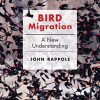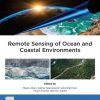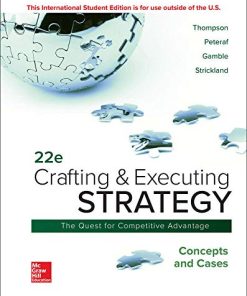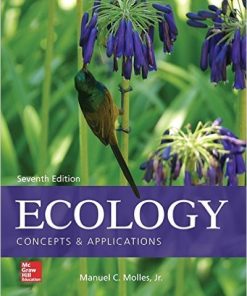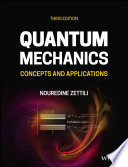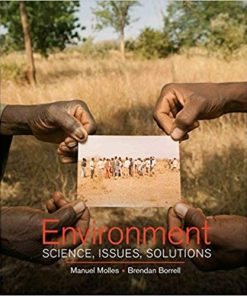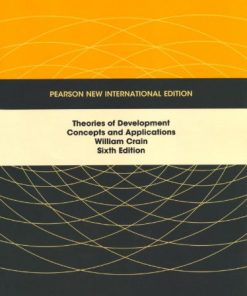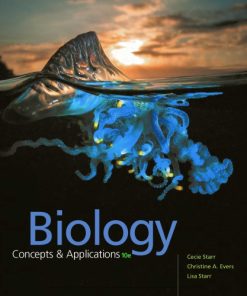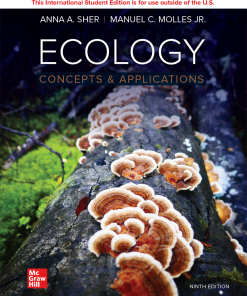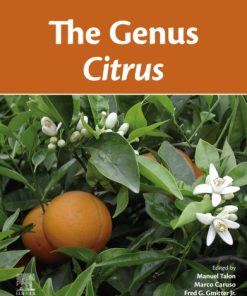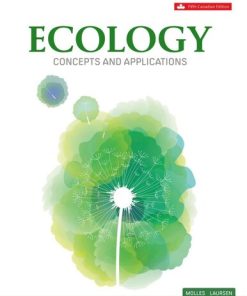(EBOOK PDF)Ecology Concepts and Applications 9th Edition by Anna Sher,Manuel Molles 1260722201 9781260722208 full chapters
$50.00 Original price was: $50.00.$25.00Current price is: $25.00.
Ecology: Concepts and Applications 9th Edition by Anna Sher,Manuel Molles – Ebook PDF Instant Download/Delivery: 1260722201, 9781260722208
Full download Ecology: Concepts and Applications 9th Edition after payment
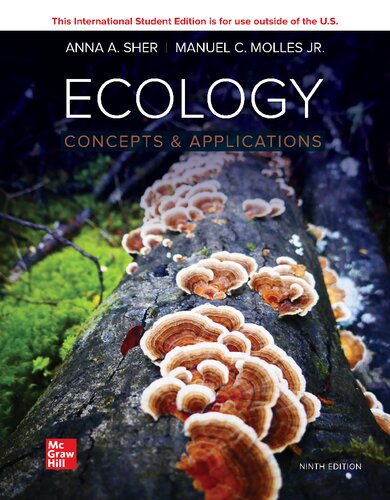
Product details:
• ISBN 10:1260722201
• ISBN 13:9781260722208
• Author:Anna Sher,Manuel Molles
Ecology: Concepts and Applications was written for students taking their first undergraduate course in ecology. The authors have assumed that students in this one-semester course have some knowledge of basic chemistry and mathematics and have had a course in general biology, which included introductions to evolution, physiology, and biological diversity.
Ecology: Concepts and Applications 9th Table of contents:
Chapter 1 Introduction to Ecology: Historical Foundations and Developing Frontiers
Concepts
1.1 Overview of Ecology
Concept 1.1 Review
1.2 Sampling Ecological Research
Climatic and Ecological Change: Past and Future
Concept 1.2 Review
Applications: Ecology Can Inform Environmental Law and Policy
Section I: Natural History And Evolution
Chapter 2 Life on Land
Concepts
Terrestrial Biomes and the Importance of Plants
2.1 Large-Scale Patterns of Climatic Variation
Temperature, Atmospheric Circulation, and Precipitation
Climate Diagrams
Concept 2.1 Review
2.2 Other Factors That Shape Terrestrial Biomes
Concept 2.2 Review
2.3 Natural History and Geography of Biomes
Tropical Rain Forest
Tropical Dry Forest
Tropical Savanna
Desert
Woodland and Shrubland
Temperate Grassland
Temperate Forest
Boreal Forest
Tundra
Mountains: A Diversity of Biomes
Concept 2.3 Review
Applications: Finer Scale Climatic Variation over Time and Space
Chapter 3 Life in Water
Concepts
Aquatic Biomes and How They Differ
3.1 Water Cycling
The Hydrologic Cycle
The Effects of Wind and Temperature
Concept 3.1 Review
3.2 The Natural History of Aquatic Environments
The Oceans
Life in Shallow Marine Waters: Kelp Forests and Coral Gardens
Marine Shores: Life Between High and Low Tides
Transitional Environments: Estuaries, Salt Marshes, Mangrove Forests, and Freshwater Wetlands
Rivers and Streams: Life Blood and Pulse of the Land
Lakes: Small Seas
Concept 3.2 Review
Applications: Biological Integrity—Assessing the Health of Aquatic Systems
Number of Species and Species Composition
Trophic Composition
Fish Abundance and Condition
A Test
Chapter 4 Population Genetics and Natural Selection
Concepts
4.1 Variation Within Populations
Variation in a Widely Distributed Plant
Variation in Alpine Fish Populations
Concept 4.1 Review
4.2 Hardy-Weinberg Principle
Calculating Gene Frequencies
Concept 4.2 Review
4.3 The Process of Natural Selection
Stabilizing Selection
Directional Selection
Disruptive Selection
Concept 4.3 Review
4.4 Evolution by Natural Selection
Heritability: Essential for Evolution
Directional Selection: Adaptation by Soapberry Bugs to New Host Plants
Concept 4.4 Review
4.5 Change due to Chance
Evidence of Genetic Drift in Island Crickets
Genetic Diversity and Butterfly Extinctions
Concept 4.5 Review
Applications: Evolution and Agriculture
Evolution of Herbicide Resistance in Weeds
Section II: Adaptations to the Environment
Chapter 5 Temperature Relations
Concepts
5.1 Microclimates
Altitude
Aspect
Vegetation
Color of the Ground
Presence of Boulders and Burrows
Aquatic Temperatures
Concept 5.1 Review
5.2 Evolutionary Trade-Offs
The Principle of Allocation
Concept 5.2 Review
5.3 Temperature and Performance of Organisms
Extreme Temperatures and Photosynthesis
Temperature and Microbial Activity
Concept 5.3 Review
5.4 Regulating Body Temperature
Balancing Heat Gain Against Heat Loss
Temperature Regulation by Plants
Temperature Regulation by Ectothermic Animals
Temperature Regulation by Endothermic Animals
Temperature Regulation by Thermogenic Plants
Concept 5.4 Review
5.5 Surviving Extreme Temperatures
Inactivity
Reducing Metabolic Rate
Hibernation by a Tropical Species
Concept 5.5 Review
Applications: Local Extinction of a Land Snail in an Urban Heat Island
Chapter 6 Water Relations
Concepts
6.1 Water Availability
Water Content of Air
Water Movement in Aquatic Environments
Water Movement Between Soils and Plants
Concept 6.1 Review
6.2 Water Regulation on Land
Water Acquisition by Animals
Water Acquisition by Plants
Water Conservation by Plants and Animals
Dissimilar Organisms with Similar Approaches to Desert Life
Two Arthropods with Opposite Approaches to Desert Life
Concept 6.2 Review
6.3 Water and Salt Balance in Aquatic Environments
Marine Fish and Invertebrates
Freshwater Fish and Invertebrates
Concept 6.3 Review
Applications: Using Stable Isotopes to Study Water Uptake by Plants
Stable Isotope Analysis
Using Stable Isotopes to Identify Plant Water Sources
Chapter 7 Energy and Nutrient Relations
Concepts
7.1 Photosynthetic Autotrophs
The Solar-Powered Biosphere
Concept 7.1 Review
7.2 Chemosynthetic Autotrophs
Concept 7.2 Review
7.3 Heterotrophs
Chemical Composition and Nutrient Requirements
Concept 7.3 Review
7.4 Energy Limitation
Photon Flux and Photosynthetic Response Curves
Food Density and Animal Functional Response
Concept 7.4 Review
7.5 Optimal Foraging Theory
Testing Optimal Foraging Theory
Optimal Foraging by Plants
Concept 7.5 Review
Applications: Bioremediation—Using the Trophic Diversity of Bacteria to Solve Environmental Problems
Leaking Underground Storage Tanks
Cyanide and Nitrates in Mine Spoils
Chapter 8 Social Relations
Concepts
8.1 Mate Choice versus Predation
Mate Choice and Sexual Selection in Guppies
Concept 8.1 Review
8.2 Mate Choice and Resource Provisioning
Concept 8.2 Review
8.3 Nonrandom Mating in a Plant Population
Concept 8.3 Review
8.4 Sociality
Cooperative Breeders
Concept 8.4 Review
8.5 Eusociality
Eusocial Species
Evolution of Eusociality
Concept 8.5 Review
Applications: Behavioral Ecology and Conservation
Tinbergen’s Framework
Environmental Enrichment and Development of Behavior
Section III: Population Ecology
Chapter 9 Population Distribution and Abundance
Concepts
9.1 Distribution Limits
Kangaroo Distributions and Climate
Distributions of Plants Along a Moisture-Temperature Gradient
Distributions of Barnacles Along an Intertidal Exposure Gradient
Concept 9.1 Review
9.2 Patterns on Small Scales
Scale, Distributions, and Mechanisms
Distributions of Tropical Bee Colonies
Distributions of Desert Shrubs
Concept 9.2 Review
9.3 Patterns on Large Scales
Bird Populations Across North America
Plant Distributions Along Moisture Gradients
Concept 9.3 Review
9.4 Organism Size and Population Density
Animal Size and Population Density
Plant Size and Population Density
Concept 9.4 Review
Applications: Rarity and Vulnerability to Extinction
Seven Forms of Rarity and One of Abundance
Chapter 10 Population Dynamics
Concepts
10.1 Dispersal
Dispersal of Expanding Populations
Range Changes in Response to Climate Change
Dispersal in Response to Changing Food Supply
Dispersal in Rivers and Streams
Concept 10.1 Review
10.2 Metapopulations
A Metapopulation of an Alpine Butterfly
Dispersal Within a Metapopulation of Lesser Kestrels
Concept 10.2 Review
10.3 Patterns of Survival
Estimating Patterns of Survival
High Survival Among the Young
Constant Rates of Survival
High Mortality Among the Young
Three Types of Survivorship Curves
Concept 10.3 Review
10.4 Age Distribution
Contrasting Tree Populations
A Dynamic Population in a Variable Climate
Concept 10.4 Review
10.5 Rates of Population Change
Estimating Rates for an Annual Plant
Estimating Rates When Generations Overlap
Concept 10.5 Review
Applications: Changes in Species Distributions in Response to Climate Warming
Chapter 11 Population Growth
Concepts
11.1 Geometric and Exponential Population Growth
Geometric Growth
Exponential Growth
Exponential Growth in Nature
Concept 11.1 Review
11.2 Logistic Population Growth
Concept 11.2 Review
11.3 Limits to Population Growth
Environment and Birth and Death Among Darwin’s Finches
Concept 11.3 Review
Applications: The Human Population
Distribution and Abundance
Population Dynamics
Population Growth
Chapter 12 Life Histories
Concepts
12.1 Offspring Number versus Size
Egg Size and Number in Fish
Seed Size and Number in Plants
Seed Size and Seedling Performance
Concept 12.1 Review
12.2 Adult Survival and Reproductive Allocation
Life History Variation Among Species
Life History Variation within Species
Concept 12.2 Review
12.3 Life History Classification
r and K Selection
Plant Life Histories
Opportunistic, Equilibrium, and Periodic Life Histories
Lifetime Reproductive Effort and Relative Offspring Size: Two Central Variables?
Concept 12.3 Review
Applications: Climate Change and Timing of Reproduction and Migration
Altered Plant Phenology
Animal Phenology
Section IV: Interactions
Chapter 13 Species Interactions and Competition
Concepts
Competitive Interactions Are Diverse
13.1 Intraspecific Competition
Intraspecific Competition Among Plants
Intraspecific Competition Among Planthoppers
Interference Competition Among Terrestrial Isopods
Concept 13.1 Review
13.2 Competitive Exclusion and Niches
The Feeding Niches of Darwin’s Finches
Competition for Caterpillars
Concept 13.2 Review
13.3 Mathematical and Laboratory Models
Modeling Interspecific Competition
Laboratory Models of Competition
Concept 13.3 Review
13.4 Competition and Niches
Niches and Competition Among Plants
Niche Overlap and Competition Between Barnacles
Competition and the Niches of Small Rodents
Character Displacement
Evidence for Competition in Nature
Concept 13.4 Review
Applications: Competition Between Native and Invasive Species
Chapter 14 Exploitative Interactions: Predation, Herbivory, Parasitism, and Disease
Concepts
14.1 Exploitation and Abundance
A Herbivorous Stream Insect and Its Algal Food
Bats, Birds, and Herbivory in a Tropical Forest
A Pathogenic Parasite, a Predator, and Its Prey
Concept 14.1 Review
14.2 Dynamics
Cycles of Abundance in Snowshoe Hares and Their Predators
Experimental Test of Food and Predation Impacts
Population Cycles in Mathematical and Laboratory Models
Concept 14.2 Review
14.3 Refuges
Refuges and Host Persistence in Laboratory and Mathematical Models
Exploited Organisms and Their Wide Variety of “Refuges”
Concept 14.3 Review
14.4 Ratio-Dependent Models of Functional Response
Alternative Model for Trophic Ecology
Evidence for Ratio-Dependent Predation
Concept 14.4 Review
14.5 Complex Interactions
Parasites and Pathogens That Manipulate Host Behavior
The Entangling of Exploitation with Competition
Concept 14.5 Review
Applications: The Value of Pest Control by Bats: A Case Study
Chapter 15 Mutualism
Concepts
15.1 Plant Mutualisms
Plant Performance and Mycorrhizal Fungi
Ants and Swollen Thorn Acacias
A Temperate Plant Protection Mutualism
Concept 15.1 Review
15.2 Coral Mutualisms
Zooxanthellae and Corals
A Coral Protection Mutualism
Concept 15.2 Review
15.3 Evolution of Mutualism
Facultative Ant-Plant Protection Mutualisms
Concept 15.3 Review
Applications: Mutualism and Humans
Guiding Behavior
Section V: Communities and Ecosystems
Chapter 16 Species Abundance and Diversity
Concepts
16.1 Species Abundance
The Lognormal Distribution
Concept 16.1 Review
16.2 Species Diversity
A Quantitative Index of Species Diversity
Rank-Abundance Curves
Concept 16.2 Review
16.3 Environmental Complexity
Forest Complexity and Bird Species Diversity
Niches, Heterogeneity, and the Diversity of Algae and Plants
The Niches of Algae and Terrestrial Plants
Complexity in Plant Environments
Soil and Topographic Heterogeneity
Nutrient Enrichment Can Reduce Environmental Complexity
Nitrogen Enrichment and Ectomycorrhizal Fungus Diversity
Concept 16.3 Review
16.4 Disturbance and Diversity
The Nature and Sources of Disturbance
The Intermediate Disturbance Hypothesis
Disturbance and Diversity in the Intertidal Zone
Disturbance and Diversity in Temperate Grasslands
Concept 16.4 Review
Applications: Disturbance by Humans
Urban Diversity
Chapter 17 Species Interactions and Community Structure
Concepts
17.1 Community Webs
Strong Interactions and Food Web Structure
Concept 17.1 Review
17.2 Indirect Interactions
Indirect Commensalism
Apparent Competition
Concept 17.2 Review
17.3 Keystone Species
Food Web Structure and Species Diversity
Experimental Removal of Sea Stars
Snail Effects on Algal Diversity
Fish as Keystone Species in River Food Webs
Concept 17.3 Review
17.4 Mutualistic Keystones
A Cleaner Fish as a Keystone Species
Seed Dispersal Mutualists as Keystone Species
Concept 17.4 Review
Applications: Human Modification of Food Webs
Parasitoid Wasps: Apparent Competition and Biological Control
Chapter 18 Primary and Secondary Production
Concepts
18.1 Patterns of Terrestrial Primary Production
Actual Evapotranspiration and Terrestrial Primary Production
Soil Fertility and Terrestrial Primary Production
Concept 18.1 Review
18.2 Patterns of Aquatic Primary Production
Patterns and Models
Whole-Lake Experiments on Primary Production
Global Patterns of Marine Primary Production
Concept 18.2 Review
18.3 Primary Producer Diversity
Terrestrial Plant Diversity and Primary Production
Algal Diversity and Aquatic Primary Production
Concept 18.3 Review
18.4 Consumer Influences
Piscivores, Planktivores, and Lake Primary Production
Grazing by Large Mammals and Primary Production on the Serengeti
Concept 18.4 Review
18.5 Secondary Production
A Trophic Dynamic View of Ecosystems
Top-down Versus Bottom-up Controls on Secondary Production
Linking Primary Production and Secondary Production
Concept 18.5 Review
Applications: Using Stable Isotope Analysis to Study Feeding Habits
Using Stable Isotopes to Identify Sources of Energy in a Salt Marsh
Chapter 19 Nutrient Cycling and Retention
Concepts
19.1 Nutrient Cycles
The Phosphorus Cycle
The Nitrogen Cycle
The Carbon Cycle
Concept 19.1 Review
19.2 Rates of Decomposition
Decomposition in Two Mediterranean Woodland Ecosystems
Decomposition in Two Temperate Forest Ecosystems
Decomposition in Aquatic Ecosystems
Concept 19.2 Review
19.3 Organisms and Nutrients
Nutrient Cycling in Streams and Lakes
Animals and Nutrient Cycling in Terrestrial Ecosystems
Plants and the Nutrient Dynamics of Ecosystems
Concept 19.3 Review
19.4 Disturbance and Nutrients
Disturbance and Nutrient Loss from Forests
Flooding and Nutrient Export by Streams
Concept 19.4 Review
Applications: Altering Aquatic and Terrestrial Ecosystems
Chapter 20 Succession and Stability
Concepts
20.1 Community Changes During Succession
Primary Succession at Glacier Bay
Secondary Succession in Temperate Forests
Succession in Rocky Intertidal Communities
Succession in Stream Communities
Concept 20.1 Review
20.2 Ecosystem Changes During Succession
Four Million Years of Ecosystem Change
Succession and Stream Ecosystem Properties
Concept 20.2 Review
20.3 Mechanisms of Succession
Facilitation
Tolerance
Inhibition
Successional Mechanisms in the Rocky Intertidal Zone
Mechanisms in Old Field Succession
Concept 20.3 Review
20.4 Community and Ecosystem Stability
Lessons from the Park Grass Experiment
Replicate Disturbances and Desert Stream Stability
Concept 20.4 Review
Applications: Ecological Succession Informing Ecological Restoration
Applying Succession Concepts to Restoration
SECTION VI: Large-Scale Ecology
Chapter 21 Landscape Ecology
Concepts
21.1 Landscape Structure
The Structure of Six Landscapes in Ohio
The Fractal Geometry of Landscapes
Concept 21.1 Review
21.2 Landscape Processes
Landscape Structure and the Dispersal of Mammals
Habitat Patch Size and Isolation and the Density of Butterfly Populations
Habitat Corridors and Movement of Organisms
Landscape Position and Lake Chemistry
Concept 21.2 Review
21.3 Origins of Landscape Structure and Change
Geological Processes, Climate, and Landscape Structure
Organisms and Landscape Structure
Fire and the Structure of a Mediterranean Landscape
Concept 21.3 Review
Applications: Landscape Approaches to Mitigating Urban Heat Islands
Chapter 22 Geographic Ecology
Concepts
22.1 Area, Isolation, and Species Richness
Island Area and Species Richness
Island Isolation and Species Richness
Concept 22.1 Review
22.2 The Equilibrium Model of Island Biogeography
Species Turnover on Islands
Experimental Island Biogeography
Colonization of New Islands by Plants
Manipulating Island Area
Island Biogeography Update
Concept 22.2 Review
22.3 Latitudinal Gradients in Species Richness
Latitudinal Gradient Hypotheses
Area and Latitudinal Gradients in Species Richness
Continental Area and Species Richness
Concept 22.3 Review
22.4 Historical and Regional Influences
Exceptional Patterns of Diversity
Historical and Regional Explanations
Concept 22.4 Review
Applications: Global Positioning Systems, Remote Sensing, and Geographic Information Systems
Global Positioning Systems
Remote Sensing
Geographic Information Systems
Chapter 23 Global Ecology
Concepts
The Atmospheric Envelope and the Greenhouse Earth
23.1 A Global System
The Historical Thread
El Niño and La Niña
El Niño Southern Oscillation and Marine Populations
El Niño and the Great Salt Lake
El Niño and Terrestrial Populations in Australia
Concept 23.1 Review
23.2 Human Activity and the Global Nitrogen Cycle
Concept 23.2 Review
23.3 Changes in Land Cover
Deforestation
Concept 23.3 Review
23.4 Human Influence on Atmospheric Composition
Depletion and Recovery of the Ozone Layer
Concept 23.4 Review
Applications: Impacts of Global Climate Change
Shifts in Biodiversity and Widespread Extinction of Species
Human Impacts of Climate Change
Appendix A Investigating the Evidence
1: The Scientific Method—Questions and Hypotheses
2: Determining the Sample Mean
3: Determining the Sample Median
4: Variation in Data
5: Laboratory Experiments
6: Sample Size
7: Scatter Plots and the Relationship Between Variables
8: Estimating Heritability Using Regression Analysis
9: Clumped, Random, and Regular Distributions
10: Hypotheses and Statistical Significance
11: Frequency of Alternative Phenotypes in a Population
12: A Statistical Test for Distribution Pattern
13: Field Experiments
14: Standard Error of the Mean
15: Confidence Intervals
16: Estimating the Number of Species in Communities
17: Using Confidence Intervals to Compare Populations
18: Comparing Two Populations with the t-Test
19: Assumptions for Statistical Tests
20: Variation Around the Median
21: Comparison of Two Samples Using a Rank Sum Test
22: Sample Size Revisited
23: Discovering What’s Been Discovered
Appendix B Statistical Tables
Appendix C Abbreviations Used in This Text
Appendix D Global Biomes
Glossary
References
Index
People also search for Ecology: Concepts and Applications 9th:
ecology: concepts
ecology concepts and applications 9th edition pdf
ecology concepts
freshwater ecology concepts and environmental applications
theoretical ecology concepts and applications
Tags:
Concepts and Applications,Ecology,Anna Sher,Manuel Molles
You may also like…
Business & Economics - Management & Leadership
Crafting & Executing Strategy: Concepts and Cases 22nd Edition
Physics - Quantum Physics
Politics & Philosophy - Social Sciences
Theories of development : concepts and applications 6th Edition
Biology and other natural sciences - Biology
Biology: Concepts and Applications 10th Edition by Cecie Starr 9798214338392
Biology and other natural sciences - Ecology
Ecology: Concepts and Applications (Ninth Edition) Manuel C. Molles Jr.
Science (General)
Biology and other natural sciences - Ecology
Ecology: Concepts And Applications 5th Edition by Manuel Molles 1260065812 978-1260065817


